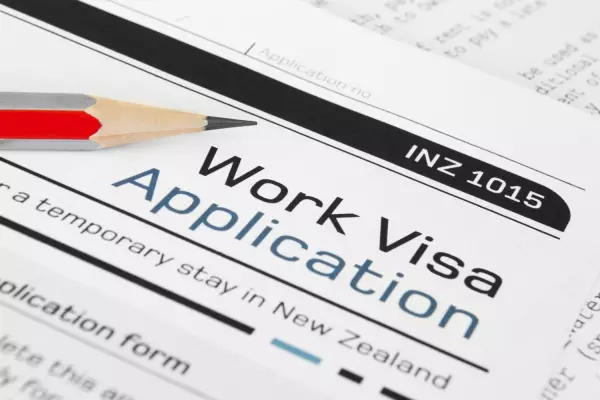New Zealand businesses wanting to employ migrant workers already have complicated laws and processes to navigate, but new details just released from Immigration New Zealand on the labour market test (LMT) is going to make the employment process even more complex.
What are the changes?
Immigration New Zealand (INZ) has put three new checks in place before an employer can hire a migrant worker.
These are intended to streamline the work visa system, ensure New Zealanders are not being displaced from employment, and minimise the potential for migrant worker exploitation.
- Employer check (mandatory accreditation status).
- Job check.
- Migrant worker check.
Let’s take a closer look at the first two points.
The Employer Check (accreditation) … why does INZ want it, and does it involve?
The underlying goal is to ensure that NZ employers have access to the skills and labour they need, hiring temporary workers for labour shortages but ensuring there is a commitment to hiring and training more New Zealanders.
In order to grant accreditation, INZ must be satisfied that an employer:
- Is in a sound financial position to determine if the employment is sustainable; and
- Has human resource policies and processes which are of a high standard; and
- Has good workplace practices, including a history of compliance with all immigration and employment New Zealand laws; and
- Has a demonstrable commitment to training New Zealand citizens or residence class visa holders (to ensure they are engaged in training and up-skilling New Zealanders and that they make up a significant part of their workforce).
- Taken steps to minimise exploitation.
Employers needing high volume accreditation status will have to be offering a minimum wage level 10% above the minimum wage unless a collective agreement is in place.
Labour hire and Tri-partite employers will have additional requirements to meet.
The job check
This will confirm that the job pays the market rate, complies with employment laws, and satisfies a labour market test (LMT), where needed.
The LMT has been designed to ensure New Zealanders get the first chance in the job market ahead of Accredited Employer Work Visa applicants. It includes criteria that employers must follow in order to establish that no New Zealander can be found to fill the position they wish to advertise for. Only then can it be offered to an overseas job seeker.
LMT settings will depend on the location of employment and get stricter for jobs where there are more New Zealanders available or wanting work.
Whether you need to do an LMT or not depends on:
- Pay rate - an LMT is mandatory for jobs paid below the median wage, and for some higher paid jobs in cities.
- Location - settings change depending on whether the job is in a city, a higher supply region, or a lower supply region.
- Occupation - settings are stricter for jobs where there is a higher supply of New Zealanders available to work or wanting more work.
One of the key points to note is the addition of three different regional settings. Add to that the various pay rate criterion, and it makes things a lot more complex for employers to work through.
First of all, employers will have to determine whether the LMT is needed. That will be determined by pay rate, if the job is located in a major metropolitan area and on a shortage list, or is classified as being in a region with a higher or lower regional supply list.
Regional LMT settings depend on pay rate; location and can change as labour market conditions change.
Work and Income NZ (WINZ) will need to be involved for roles paying under the median wage as well.
Why is INZ taking on an HR role?
On top of all of the existing complexities involved in hiring migrants, INZ now appears to be dictating the content of job advertisements and becoming prescriptive in their approach to the recruitment process.
The requirements to pass an LMT now state that the advertisement must show the pay rate, significant terms and conditions, location of the job and minimum guaranteed hours. For some roles, it will need to show details of how pay is structured if not a salary or an hourly rate.
Additionally, they also require minimum qualifications, experience or other specifications necessary to perform the work.
What that effectively means is that INZ is taking away a big part of the employer’s ability to negotiate with whoever is in the market. The concern is, by putting in pay rates or minimum guaranteed hours of work, you could actually be causing some people – who are very suitable and well qualified to perform the work – to not even bother to apply because they see those details and rule themselves out without considering negotiation.
The new LMT also sets out ‘acceptable’ reasons to decline an applicant. Of note you can’t:
- Reject an applicant for not having their own vehicle or driver licence unless operating a vehicle is a requirement for the job.
- List owning a vehicle or holding a current licence in job advertising unless it is necessary to do the job.
- Reject registered job seekers referred by the Ministry of Social Development (MSD) because they lack training if the MSD can provide or facilitate that training within four weeks.
The last point implies you may have to wait another four weeks for your applicant to complete training before they become job-worthy. It begs the question: what training can MSD provide and what is the quality of that training?
Effectively what INZ is doing is setting out what they consider to be acceptable reasons for declining an applicant, and what are not.
With this in mind, one can only conclude that they’re moving away from checking the state of the labour market, to actually vetting the employer’s recruitment process, and if need be, supplanting your assessment of the candidate for their assessment.
I see that as a dangerous shift in INZ’s role – which effectively means it’s no longer a free market for employers. It is a labour market subject to INZ’s approval of your HR processes and choices. And they are going to superimpose their own over that, which I think is something employers should be outraged by.
The misguided perception that employers are not trying to cheat the game
So why is INZ making it so hard for businesses? It seems to me that the logic behind it is the presumption that employers are looking to screw down wages and get a lower-paid worker.
In my experience, nothing could be further from the truth. The Productivity Commission has confirmed there is no evidential basis for the claim that a high level of migrant workers in the labour market suppresses wages or conditions.
In the 25 years that I’ve been working in New Zealand immigration law, the one consistent thing I hear from employers is that it is easier to employ local people.
For years, employers have told us that the hoops they must jump through to employ a migrant worker are just too prohibitive.
This was a piece of policy work that commenced when we had a migration boom and the highest level of work visa holders in our labour market.
A pandemic has radically changed that but I am left wondering whether these policy concepts have been revisited in light of that.
More importantly, the competition for labour and skills by our trading partners is steep.
Are these policy settings geared to deal with that competition?
My advice to employers
These changes are timed for mid-2022. I suspect right at the time the government is anticipating opening the border to skilled workers. Competition for that skill will be immense.
Employers need to become familiar with the new rules, especially the requirements for accreditation status, and the new expectations and requirements for labour market tests and prepare.
Plan the recruitment needs of your business for 2022 and start developing an advertising strategy, and give careful thought to the wording of the advertisements.
Don’t leave it to the last minute when recruitment becomes critical, and most importantly, when that ideal candidate comes along, make sure you are able to meet INZ requirements to employ.
Three touch words: prepare; plan and action.













